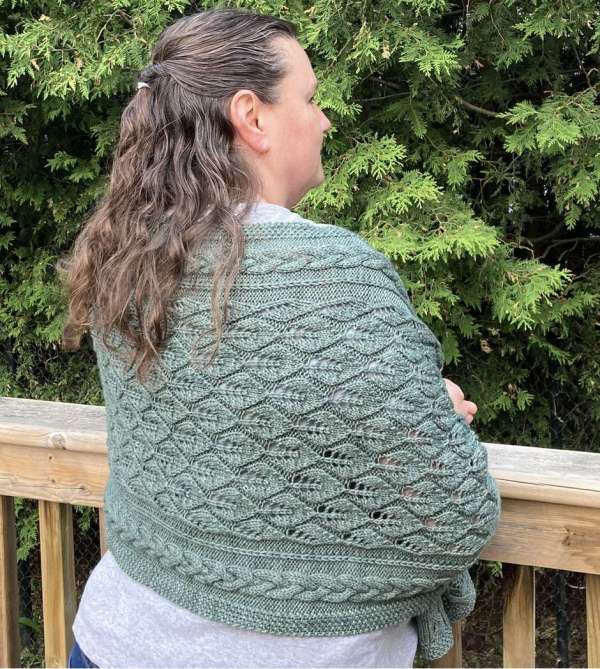 You already know I have cables on the brain from my post the other day about making cables without a cable needle. It’s funny that when you start thinking about a particular genre of knitting you start to see it everywhere, so it makes sense that the little braided cables on the edge of the Twisting Vines wrap caught my eye.
You already know I have cables on the brain from my post the other day about making cables without a cable needle. It’s funny that when you start thinking about a particular genre of knitting you start to see it everywhere, so it makes sense that the little braided cables on the edge of the Twisting Vines wrap caught my eye.
You can tell by the name of the pattern, which was designed by A. Palmatier, that the lace is really the star of the show, but I do love the combination of a sort of intricate lace with a simple cable as a frame. And honestly the lace isn’t difficult, either, but it might take you a couple of repeats to get the logic of it.
The pattern includes written instructions and a chart if you’d rather (which is a great way to practice reading a chart if you’re new to it because you can always check your work if you aren’t sure what a symbol means or your project isn’t looking quite right).
This wrap uses DK weight yarn and is a big rectangle, so it’s easy to adjust the size if you want yours to be bigger or smaller, or if you’re using yarn from your stash and don’t have the same yardage as the pattern calls for.
The Twisting Vines wrap is available as a free download from Ravelry, or if you don’t do Ravelry you can get it on the designer’s website.
Looking for more shawl patterns? I recently collected a bunch of sock yarn shawl knitting patterns, which are great because they each only use about a skein of yarn, so you can pull that special skein out of your collection and actually use it for a lightweight shawl you can wear throughout the year.
[Photo: A. Palmatier]
